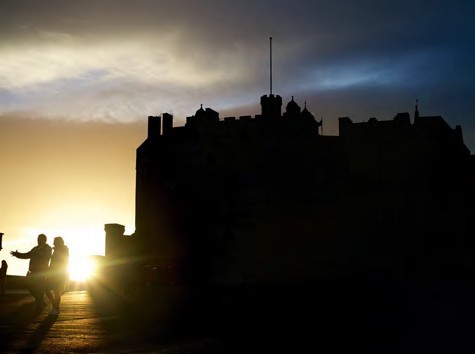
Edinburgh castle, the location for the murder of the earl of Douglas at a dinner on 24 November 1440
The assassination of King James I in 1437 plunged Scotland into a period of intense instability. The new king, James II, was only six, and his minority, lasting until 1449, would see various political figures struggling for control. Among these ‘big beasts’ was Archibald Douglas, 5th earl of Douglas, leader of the ‘Black Douglases’, easily the most powerful and important noble dynasty in late-medieval Scotland. It was this power, along with his status as next-in-line to the throne after the boy-king, that allowed Douglas to rise quickly to the position of lieutenant-general – effectively regent – before his sudden death in 1439.
The removal of Douglas led to a protracted power-struggle between various political factions, mostly importantly surrounding the formidable queen mother, Joan Beaufort, on the one hand, and the chancellor, William Crichton, on the other. But it also left the vast Douglas inheritance in the hands of a very young heir; William Douglas, the new 6th earl of Douglas, may only have been fifteen at the time of his father’s death. How would this untested youth cope with suddenly becoming the most powerful magnate in Scotland, at a time when politics was even more ruthless and bloody than normal?
He never got the chance to find out. On 24 November 1440, Douglas and his brother, David, were invited to have dinner at Edinburgh castle. While there, they were seized by Crichton’s men, accused of treason and summarily executed. Our best contemporary source for the ‘black dinner’, as it became known, is the ‘Auchinleck chronicle’, and its account is laconic in the extreme: it notes only that the Douglas bothers were ‘put to deid’, giving no hint as to how it happened or what the precise charges were. Subsequent chroniclers, however, greatly embellished this barebones narrative, claiming that the brothers were dining in the presence of James II himself when Crichton placed a bull’s head (a symbol for the execution of traitors) on the table. They were then dragged off to a show-trial before being beheaded on castle hill.